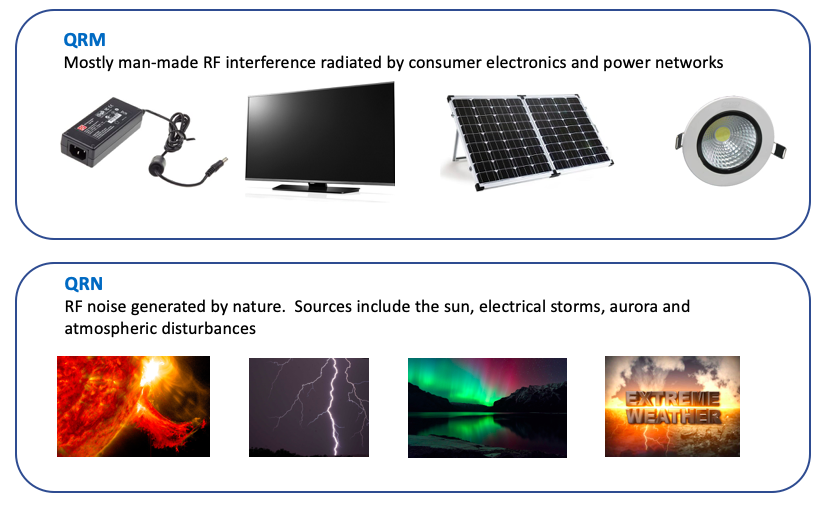Are you new to Amateur Radio or don’t know where to start? Then, start here…
If you’re new to Amateur Radio you’re likely overwhelmed with all manner of information and options on where to start. More than likely, if you live near a city, or in the suburbs, and you operate on HF, you’re quite likely to suffer from high noise levels. This page is intended to provide a starting point on dealing with NOISE.
There are basically two types of noise that can impact your enjoyment on the radio.

QRN: this is atmospheric noise, usually characterised by electrical storms and rain static. QRN is created by nature. Generally, it is good advice to unplug all antennas when storms are nearby.
QRM: this is man made noise, usually characterised a regular sound, such a the clicking noise every 2 seconds from an electric fence. Constant “hash” noise over many HF bands may be a power supply or other consumer devise nearby (generally within 300-400m). Other man made transmissions that interfere with signals are also referred to as QRM.
We’ll describe a very basic approach you can use to identify and resolve your noise issues:
1. Understand what unwanted noises sound like.
You can start by spending some time visiting these links to get a feel for what different noise sources sound like
http://qrm.guru/identifying-the-noise-useful-links/
Spend some time on QRM.guru watching the videos and learning about how man made noise impacts on Amateur Radio, and what you can do about it.
2. Start a journal and log your local observations
Next, give some thought to your local receive conditions. If you think you are hearing any noises like those you’ve been listening to, and you feel your noise floor is high, then start making some notes. Use these forms to help you create a journal – this will be very useful when you start the next steps.
What’s a high noise floor? Anything over S3-5 with constant QRM style noise is probably worth addressing.
Click here for a Template to profile your noise
Click here for a Template log sheet for recording your observations
3. Start to profile the noise.
Can you identify its direction, lowest frequency of observation, time of day. Have you confirmed it is not generated on your property? Use the tools and methods in QRM guru to help guide you through the process.
4. If you feel confident, follow the steps listed on QRM.guru.
Click here for The QRM Guru Process
If you feel you need some help, reach out to your local club, or try to find a local radio amateur who is willing to help. Amateur Radio is a hobby of camaraderie and friendship.
If you’d like some support, please send an email to [email protected] . We’ll guide you through the process and offer some help via email.
Or, contact your local club.
Once you’ve done your own research and reviewed the material on this website, feel welcome to send us an email. We can’t promise to solve your local problems, but we’ll do our best to point you in the right direction.
